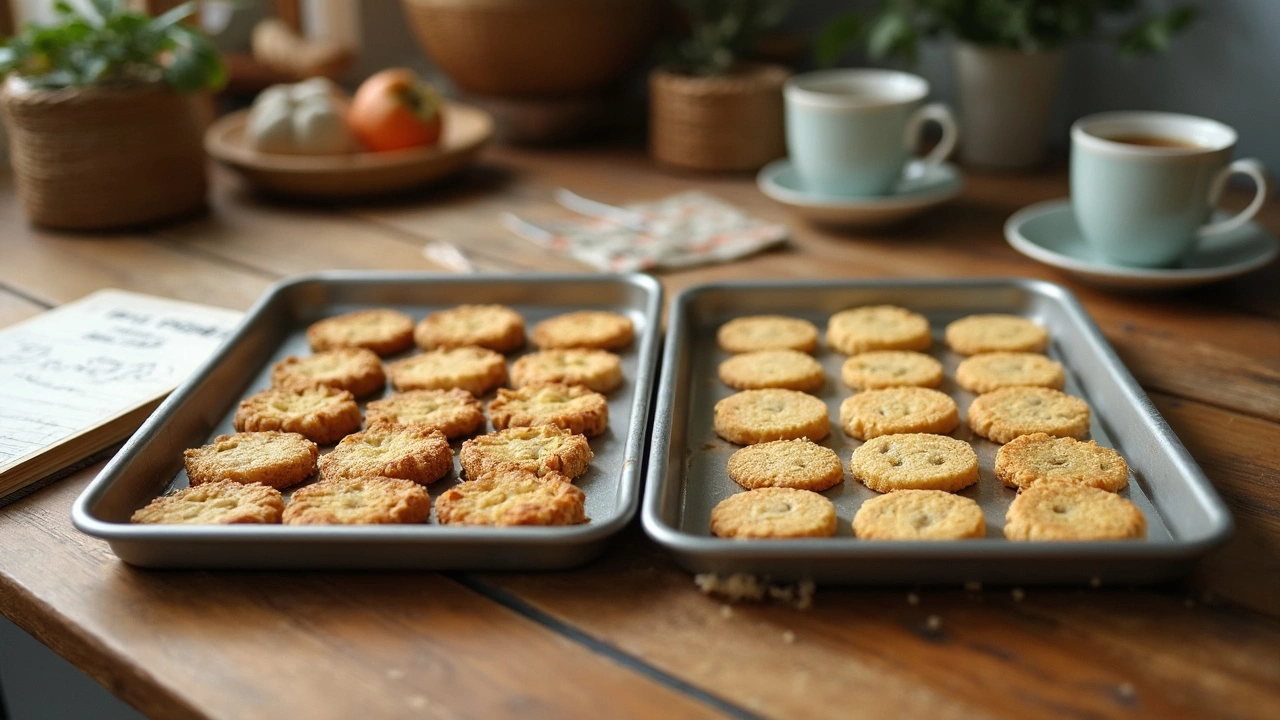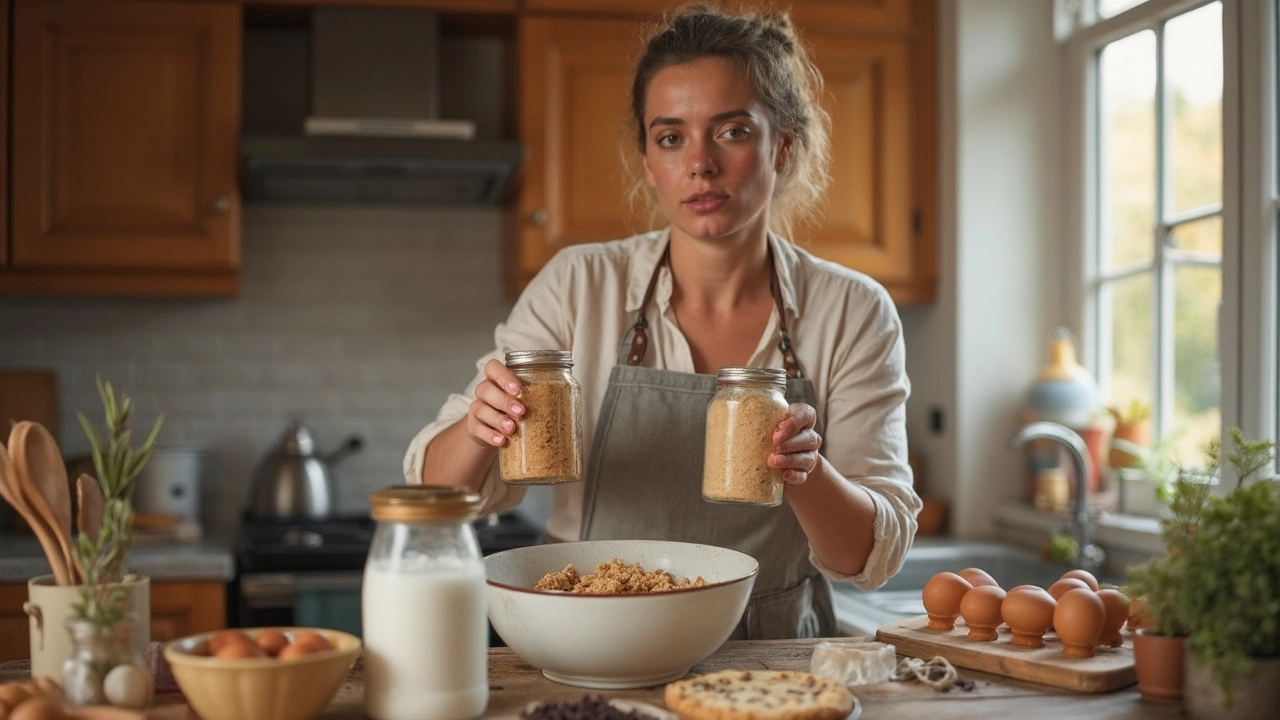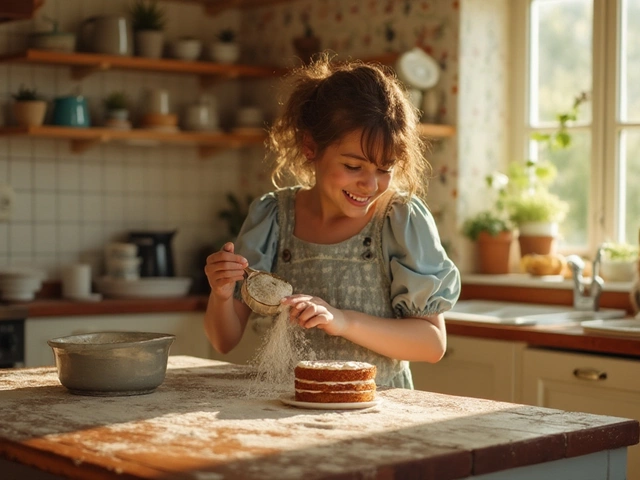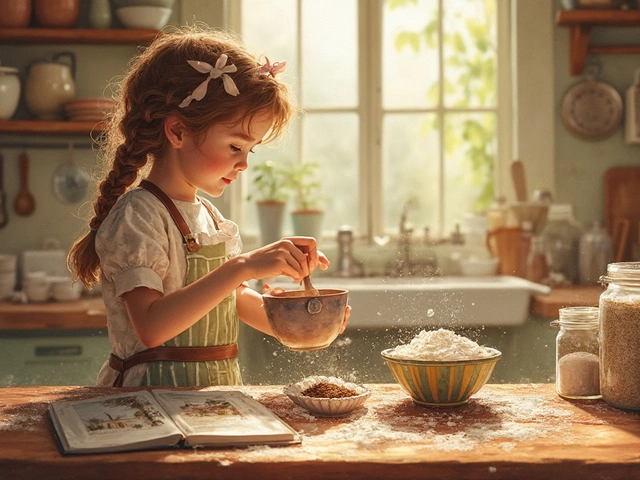Forget the pressure—nobody’s going to show up at your door if you skip brown sugar in your cookies. But what really happens if you use plain white sugar instead? Does something magical stop happening in the oven? The answer is simple: it really depends on what you want from your cookies.
Brown sugar isn’t in recipes for nothing though. It does more than sweeten; it’s all about moisture, chewiness, and even that classic cookie colour. But here's the truth: you can swap it out and still get eatable, even delicious, cookies. The real surprise? Your cookies might be a bit crispier and lighter in colour, but that chewy, soft bite people rave about does take a bit of a hit.
If you’re fresh out of brown sugar and craving cookies, don’t panic. Grab that white sugar. As long as you’re okay with a little difference in flavour and texture, they’ll come out fine. Want closer results? There are simple workarounds, and you definitely don’t need a fancy ingredient to make up for brown sugar’s cozy vibes.
- The Purpose of Brown Sugar in Cookies
- What Changes Without Brown Sugar?
- Best Substitutes for Brown Sugar
- Baking Tested: What to Expect
The Purpose of Brown Sugar in Cookies
Let’s get straight to it—why is brown sugar such a big deal in homemade cookies? Well, it’s all about what happens in the bowl and in the oven. Brown sugar is just white sugar with a bit of molasses mixed in, but that simple difference totally changes how your cookies turn out. The extra molasses means more moisture and just a touch of tangy, caramel-like flavour that sets classic cookies apart from the rest.
The science isn’t stuffy: brown sugar’s moisture locks in softness. If you’ve ever bitten into a chewy cookie and wondered why it’s so different from those crunchy ones, you can thank brown sugar for that. It also speeds up browning because of those extra minerals in molasses, so your cookies look more golden and inviting, not pale and washed out.
"Brown sugar adds moisture and a deeper flavor to cookies, making them soft and slightly chewy, unlike cookies made solely with white sugar." — King Arthur Baking Company
Besides texture and taste, brown sugar even changes how cookies spread. There's just enough acidity in the molasses to react with baking soda, giving your cookies a bit more oomph as they bake. Take a look at this quick breakdown:
| What Brown Sugar Does | How It Shows Up in Cookies |
|---|---|
| Adds moisture | Softer, chewier texture |
| Boosts flavour | Warm, caramel taste |
| Speeds up browning | Rich golden-brown colour |
| Changes the rise | Helps cookies puff up a bit |
So when a recipe calls for brown sugar, it’s not just for sweetness. It actually tweaks texture, colour, and even the way your cookies smell when you open the oven—molasses has that effect. That’s why a lot of the best chocolate chip cookie recipes lean heavily on brown sugar, or at least use a mix with white sugar to get the best of both worlds.
And if you ever want a batch that tastes just like the bakery, now you know exactly what makes it happen.
What Changes Without Brown Sugar?
Take brown sugar out of your cookie dough, and things definitely shift. The first thing you’ll probably notice is your cookies won't be as chewy. That's because brown sugar holds onto moisture better than white sugar. Instead of getting a soft bite in the middle, your cookies might end up on the crispier, crunchier side.
Colour is another giveaway. Brown sugar is made with molasses, which gives cookies that golden, caramel look. Without it, your cookies turn out paler. They taste sweeter, but you lose some of that deep, kinda rich flavour that makes classic cookies feel homemade.
Your kitchen might smell a bit different too. Without the molasses in brown sugar, that signature bakery-cookie aroma won’t hit as hard. The taste also leans less complex—almost like shortbread instead of the usual bold cookie flavour.
It’s not just about taste and texture. Skipping brown sugar can mess with how your cookies spread while baking. Cookies made with just white sugar often spread out more (thinner, wider cookies). This is because brown sugar is a bit acidic, and that helps the baking soda do its work right. No brown sugar? Expect flatter cookies.
| Change | With Brown Sugar | Without Brown Sugar |
|---|---|---|
| Texture | Chewy, moist | Crispier, drier |
| Colour | Golden brown | Pale, light |
| Flavour | Rich, toasty, complex | Sweeter but simpler |
| Spread | Thicker, holds shape | Flatter, spreads out |
So, if you swap out brown sugar for all white sugar, know what you’ll get. It’s not better or worse—just different. Sometimes a little crunch is what you’re after, anyway!

Best Substitutes for Brown Sugar
If you’re about to bake cookies and discover you’re out of brown sugar, don’t stress. There are simple ways around it, using stuff you probably already have.
The fastest fix is just using plain white sugar. Your cookies will still be sweet and totally edible—they’ll just miss that hint of molasses flavour and be a little crispier than normal.
- White sugar + molasses: If you want to copy brown sugar exactly, just mix one tablespoon of molasses for every cup of white sugar. Stir well, and you’ve got a true brown sugar swap.
- Maple syrup or honey: These add a little moisture and a different twist to the taste—both make cookies a bit chewier, but they’ll be softer so watch your mixing.
- Coconut sugar: If you have this, it’s another easy switch. It tastes a bit like brown sugar, but expect a touch more crunch and a slightly earthy flavour.
When you use liquid subs like maple syrup or honey, cut back just a smidge on other liquids in your dough so things don’t get too runny. A good rule is to remove one tablespoon of another liquid for every tablespoon you add.
| Substitute | 1 Cup Brown Sugar Equals | Texture Result |
|---|---|---|
| White sugar | 1 cup | Crispier, lighter color |
| White sugar + molasses | 1 cup + 1 tbsp molasses | Very close to brown sugar |
| Maple syrup or honey | 2/3 cup | Softer, chewier |
| Coconut sugar | 1 cup | Slight crunch, mild flavor |
No need to run to the store or abandon your cookie plans. Most of these swaps work in a pinch, and a surprising number of people actually end up liking the results—or at least finishing all the cookies anyway.
Baking Tested: What to Expect
I decided to put this whole brown sugar question to the test with a few batches of homemade cookies. I used my usual chocolate chip recipe: one batch with brown sugar and one with just white sugar. Honestly, the differences were pretty obvious, but not necessarily dealbreakers.
If you use only white sugar in your cookies, here’s what you’ll probably notice:
- Texture: The cookies come out crisper and have more snap. Brown sugar holds moisture, so you lose some of that chewiness when it’s gone.
- Flavour: No deep, caramelly notes. White sugar makes things a bit more plain—like a classic sugar cookie instead of that rich, buttery taste.
- Colour: Expect lighter cookies. Brown sugar is what gives that cozy golden-brown colour. White sugar only gives you a very pale cookie.
If you want to see actual numbers, check this out from a 2023 cookie bake-off published by a Canadian food magazine:
| Cookie Batch | Moisture (Softness) | Spread (Width) | Colour |
|---|---|---|---|
| With Brown Sugar | High | Average | Golden |
| White Sugar Only | Low | More Spread | Pale |
So if you sub out brown sugar for white, your cookies will usually bake up thinner, crispier, and milder tasting. Still definitely edible—don’t toss the whole tray—but if you crave that bakery chew, it’s worth tracking down some brown sugar or making a quick DIY mix with molasses.
One quick tip: if you try with all white sugar, chill your dough for at least an hour—this actually helps control the spread and gives you a bit more thickness, even without the moisture from brown sugar.





